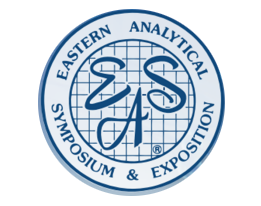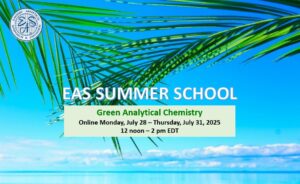Dr. Thomas A. Kubic, TAKA Instructional Agency, Inc. and New York Microscopical Society
COURSE DESCRIPTION
Both the United States Food & Drug Administration and United States Pharmacopeia have regulations, guidelines, and procedures that suggest or require the use of microscopy for either possible contamination identification or quality procedures that ensure the production of a consistent polymorph of an approved active pharmaceutical ingredient. Often the analyses are conducted with light or electron microscopes employing a plethora of auxiliary techniques mated to the image producing instruments. This one-day course will introduce the student to the critical information with which he should be more than familiar in order to specify imaging equipment and the use of these devices properly. The course will concentrate on optimizing the performance and correct use of transmitted light microscopes, particularly the polarized light microscope, with the addition of how electron microscopes can add to the analyst’s gathering of critical information. Other light microscope techniques such as enhanced contrast methods and reflected illumination will be introduced. The course will consist of lecture, demonstrations, and hands on exercises by the students. This is an introductory course, which can serve as a springboard to more advanced studies. This course is NOT a specific training class dealing with any of the specific methods promulgated by any agency or organization.
WHO SHOULD ATTEND
This one-day course will benefit analysts, QA and QC managers, regulators, and researchers, who perform or wish to microscopical testing, develop methods, develop programs and evaluate data from pharmaceutical products. To get the most out of the course, we highly recommended that you have attained a BS degree that has included at least a semester of physics including basic optics. Some experience of the quality issues within the pharmaceutical industry, which are addressed by microscopical methods would be valuable.
TOPICS
1. Nature and Descriptions of Various Microscopes
* The types of samples and microscopes employed for observation
* Technical Aspects of a transmitted light microscope
* Microscopical Characteristics used for Identification
* Refractive Index and its Measurement
* Proper Alignment of a Microscope
2. Polarized Light and Basic Polarized Light Microscopy
* Isotropic and anisotropic materials
* Uniaxial and biaxial materials (e,w;a,b,c)
* Very basic crystallography
* Crystal sign, sign of elongation, compensation
* Polarized light microscope observations
3. Hands on Exercises and Discussion (No more than two students per microscope)
* Participants practice proper alignment of a transmitted light microscope
* Students will observe the effects of differences in refractive indices
* Students will learn how to measure refractive index
* The effects of crossed polarized light will be determined on various samples
* Participants will perform microscopical observations on various pre-prepared samples
ABOUT THE INSTRUCTOR
Dr. Thomas A. Kubic MS, JD, is currently a Professor of forensic chemical instrumentation, scientific and expert testimony, electron microscopy, and advanced transfer evidence analysis, at John Jay College of Criminal Justice, C.U.N.Y. He enjoys dual appointments to the Doctorial Faculties in both Forensic Science and Chemistry at the Graduate Center of C.U.N.Y. He is currently the Program Director for the Doctoral Program in Forensic Science at C.U.N.Y. He holds a Ph. D. with a concentration in Forensic Science from C.U.N.Y., a Masters Degree in Chemistry from Long Island University and a Law degree from St. John’s University. He has been admitted to the New York State Bar. He has been awarded the Paul L. Kirk award (1997) for contributions to criminalistics and forensic science by the Criminalistics Section of the American Academy of Forensic Sciences, The Emile M. Chamot Award for chemical microscopy by The State Microscopical Society of Illinois (2015) and the Arthur Neiderhoffer Scholarship by the Graduate School City University of New York for significant contributions to the field of Criminal Justice. He retired from a municipal crime laboratory where he spent over 20 years as a forensic microscopist, was a member of the FBI sponsored SWGMAT committee on forensic glass analysis, is a technical expert with NIST’s laboratory accreditation programs (NVLAP) for asbestos analysis and body armor, and has been the laboratory director of a N.Y. State accredited environmental laboratory. He is the Director of the New York State Not-for-Profit Educational Corporation, TAKA Instructional Agency where he has developed and taught classes in Scanning Electron Microscopy, X-ray Spectroscopy, Asbestos Analysis by light and electron microscopy, X-Ray Diffraction, Forensic Glass Analysis, Gun Shot Residue Analysis by SEM and EDS, and Quality Data for Forensic Chemists. He has been an instructor in a number of microscopy and industrial hygiene courses at the continuing education program of EOSHI a division of UMDNJ, Rutgers University. He maintains a successful consulting company dealing with the identification and characterization of particulate materials by light and electron microscopy especially when of forensic import. Dr. Kubic has qualified as an expert and testified to his opinions in both Federal and State Courts in criminal and civil actions. He is the author of over 25 scientific and technical articles as well as a number of textbook chapters, and has made over 100 presentations at technical conferences. He is the co-author of an atlas on the application of light microscopy for criminalists, chemists, and conservators and a laboratory manual for beginning forensic science students. He is a Fellow of the American Academy of Forensic Sciences and holds Diplomate status as a certified criminalist. He is a member of the New York Microscopical Society, The Royal Microscopy Society, and The American Chemical Society as well as other professional organizations.

